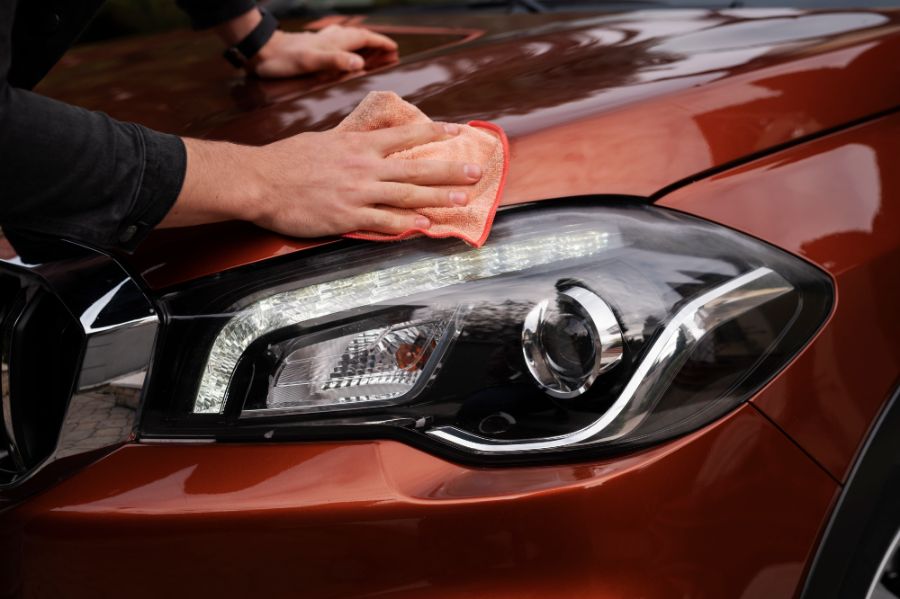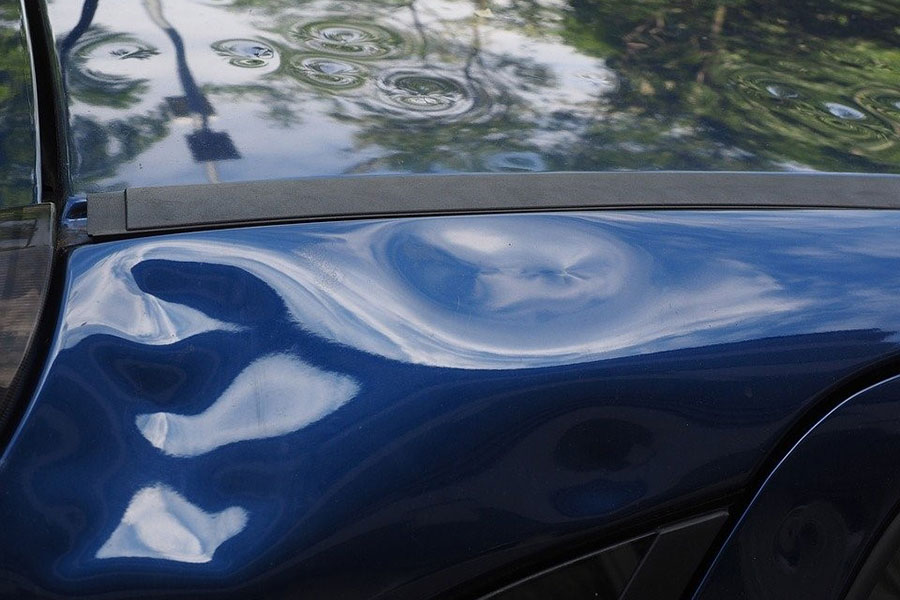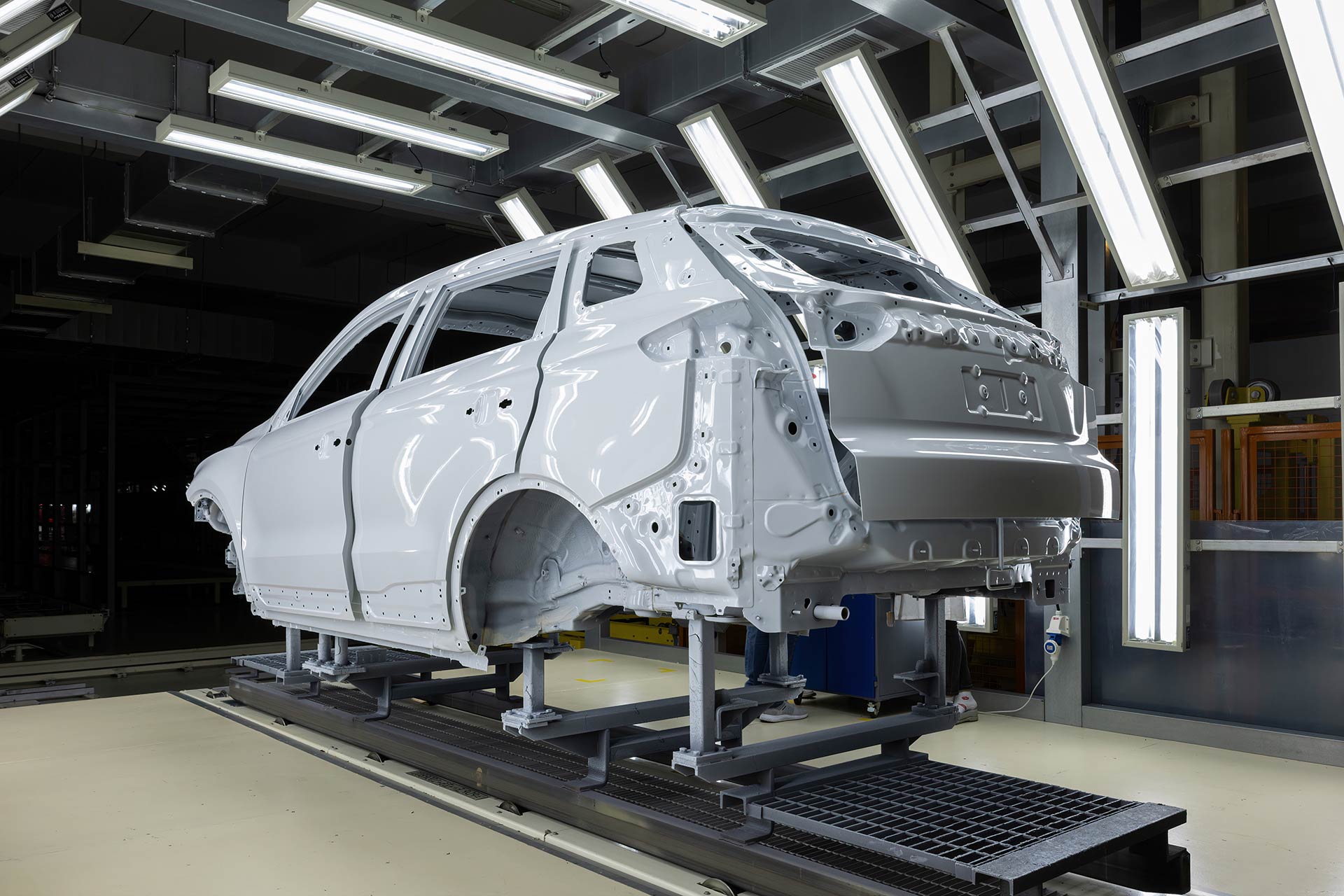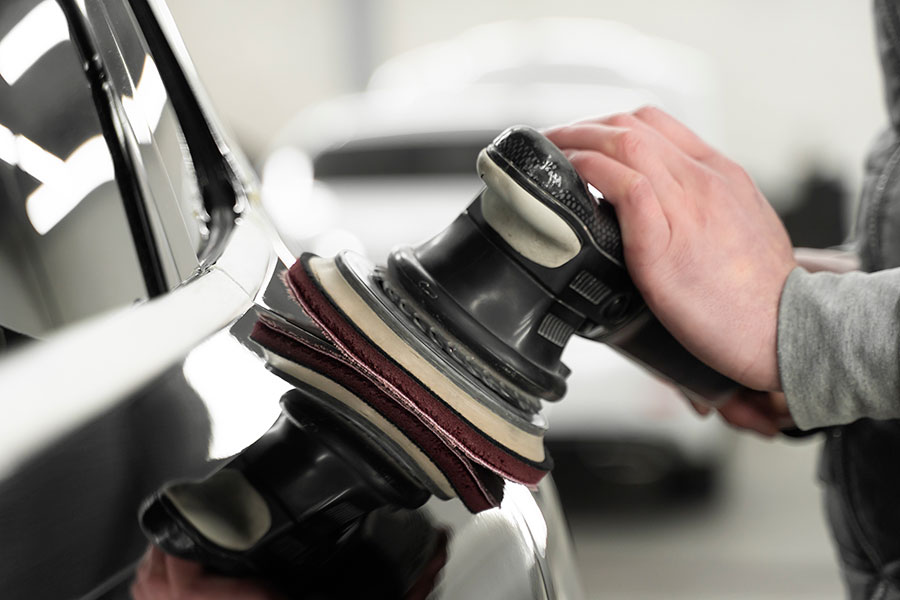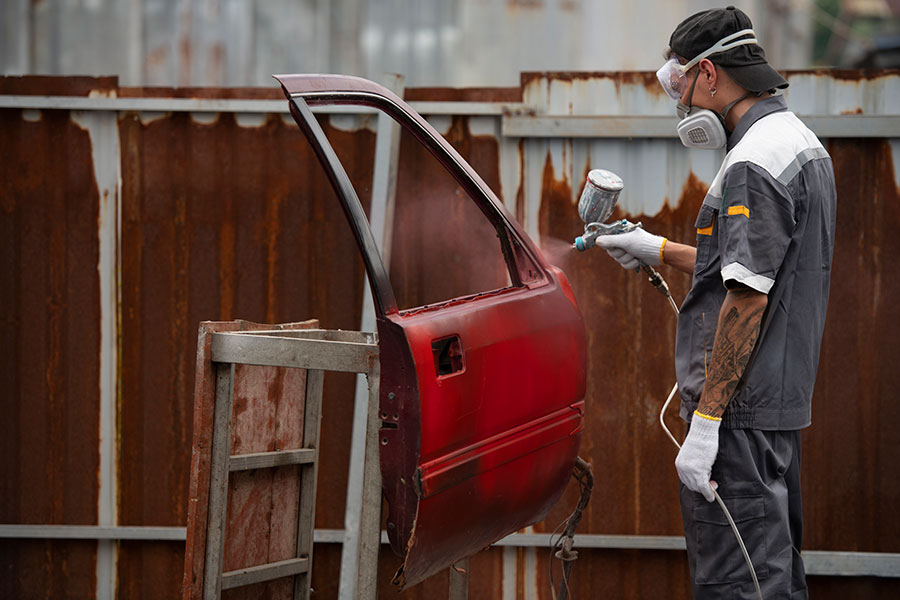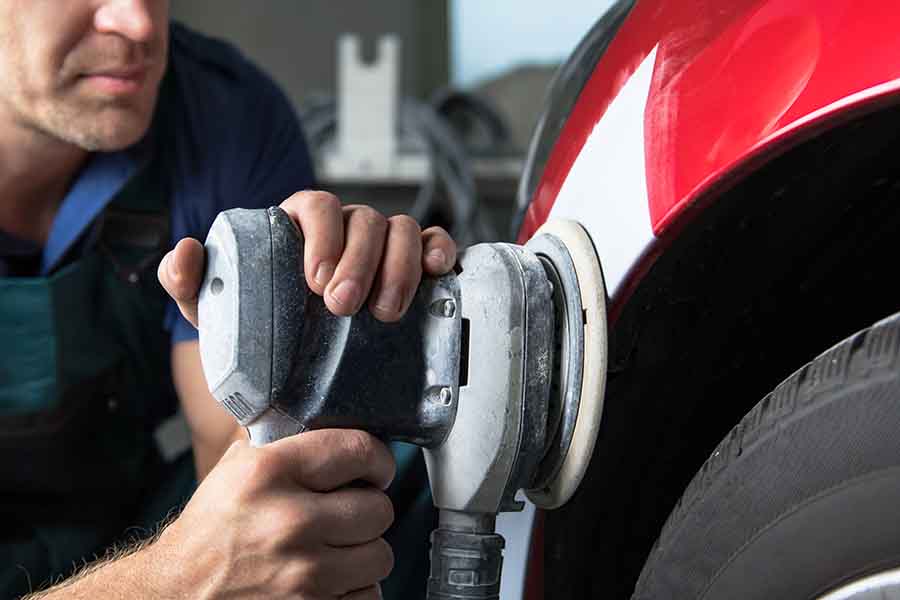Did you know that over 70% of cars on the road have minor scratches that can easily be fixed with the right car scratch repair techniques? Scratches on your car aren't just an eyesore; they can also lower its value and lead to more significant problems if not addressed. Whether it's a small scuff from a shopping cart or a deeper gouge from an unfortunate encounter with a fence, understanding how to tackle these blemishes is key to keeping your vehicle looking its best. This post dives into the world of car scratch repair, offering straightforward solutions to restore your car's shine without breaking the bank or taking up all your free time. Let's get those scratches out and bring back that showroom sparkle!
Understanding Scratch Types
Clear-Coat Scratches
Clear-coat scratches are the most common and least severe. They only affect the car's top layer, which is a clear coat. You can often fix these with a mild polishing compound.
To check if a scratch is just on the clear coat, try the fingernail test. Drag your fingernail gently across the scratch. If it doesn't catch, it's likely a clear-coat scratch. These are easier to repair at home.
Primer-Level Scratches
Primer-level scratches go deeper than the clear coat but haven't reached the paint. They require more attention than clear-coat scratches. You'll need to use a primer or a touch-up pen that matches your car's color.
The fingernail test is also useful here. If your nail catches slightly but the scratch doesn't show a different color than your car's paint, it's probably at the primer level. Repairing these scratches involves applying a primer and then painting over it.
Paint-Depth Scratches
Paint-depth scratches are the most serious. They reach down to the metal or plastic of your car. Immediate action is crucial to prevent rust or further damage.
If your fingernail catches deeply in the scratch, and you can see metal or plastic, it's a paint-depth scratch. These often require professional repair. However, there are DIY kits for those who feel confident in their abilities.
Knowing the depth of a scratch is vital for choosing the right repair method. The fingernail test is a simple way to assess this at home. It helps you understand whether you can tackle the job yourself or need professional help.
Choosing Scratch Removers
Abrasive Types
Abrasive scratch removers work by removing a thin layer of the car's paint. They physically sand down the area around the scratch. This can make the scratch less noticeable or even remove it entirely if it's shallow enough.
These products are often made with tiny particles that polish the surface as they're rubbed in. They are best for light to medium scratches. However, they require careful application to avoid further damage.
Chemical Types
Chemical scratch removers, on the other hand, use a special formula to fill in scratches. They don't remove any of the car's paint. Instead, these removers react with the paint to seal the scratch.
They are easier to use than abrasive types and are safer for your car's overall paint job. But, they might not be as effective on deeper scratches. It's important to follow the instructions closely.
Paint Color Considerations
The color of your car plays a big role in selecting a scratch remover. Some products are specifically designed for certain colors.
Dark-colored vehicles might show scratches more clearly, requiring a product that offers a perfect color match. Lighter colors might be more forgiving but can still benefit from color-specific formulas that blend the repair seamlessly.
Scratch Depth
Understanding the depth of the scratch is crucial before choosing a remover. If you recall from "Understanding Scratch Types," scratches can range from superficial to deep.
Superficial scratches often only affect the clear coat and can be treated with most types of removers. Deeper scratches that reach the paint or primer will need a more specialized approach, possibly involving both abrasive and chemical products.
Comparing Removal Solutions
DIY vs. Commercial
Toothpaste, a common household item, often emerges as a go-to DIY scratch remover. Its mild abrasive properties can make light scratches less visible. However, its effectiveness pales in comparison to commercial scratch removers designed specifically for automotive paint. These products contain more sophisticated compounds that can tackle deeper scratches more effectively.
While toothpaste is cheaper and readily available, it offers a temporary fix. It might work for very superficial marks but lacks the lasting impact of commercial alternatives. On the other hand, commercial scratch removers, though more expensive, provide a more durable solution. They are formulated to not only reduce the appearance of scratches but also to protect the paint over time.
Cost-Benefit Analysis
When analyzing the cost-benefit of various scratch removal products, it's important to consider both price and performance. DIY solutions like toothpaste are almost cost-free but offer limited benefits. Commercial products range in price from affordable to premium, with their effectiveness generally aligning with their cost.
A mid-range commercial scratch remover might cost around $15 to $30 and can resolve most moderate scratches. High-end products, priced upwards of $50, promise professional-grade results but might be overkill for minor damage. The key is to find a balance between the severity of the scratch and the price you're willing to pay for a repair.
User Reviews
User reviews and testimonials play a crucial role in finding the best scratch removal solution. They offer real-world insights into how different products perform on various types of scratches and vehicles. Positive reviews often highlight ease of use, effectiveness, and value for money as deciding factors.
Many users share before-and-after photos, providing visual proof of a product's capabilities. Negative reviews can also be helpful by highlighting any common issues or limitations. By sifting through user feedback, car owners can make an informed decision tailored to their specific needs.
Guide to Removal Kits
Kit Contents
Most car scratch removal kits come with a few essential items. You'll often find sandpaper to smooth out the scratch, polish to restore the shine, and wax to seal and protect the paint. Some kits may also include a microfiber cloth for application and a cleaner to prep the area.
These tools work together to address scratches effectively. The sandpaper helps in reducing the scratch depth. Then, polish brings back the gloss. Finally, wax adds a protective layer, keeping the car looking newer for longer.
Choosing a Kit
Selecting the right car scratch removal kit depends on two main factors: scratch severity and your DIY skill level. For light scratches, a basic kit with polish and wax might suffice. Deeper scratches require more comprehensive kits that include sandpaper of varying grits.
If you're new to DIY car maintenance, look for kits with detailed instructions and minimal steps. More experienced users can opt for professional-grade kits that offer greater precision but require more skill to use.
It's crucial to assess both the scratch and your ability before making a purchase. This ensures you get a kit that not only suits your needs but also is within your capability to use effectively.
Following Instructions
One cannot stress enough the importance of following the kit instructions carefully. Each step in the process is designed to ensure the best results while minimizing the risk of further damage to your vehicle's paint.
Skipping steps or rushing through them can lead to unsatisfactory outcomes or even worsen the scratch. Take your time, follow each instruction closely, and don't hesitate to redo a step if necessary. Patience here is key to achieving a flawless finish.
Applying Removers Effectively
Clean Workspace
Creating a clean, well-lit workspace is crucial before starting the scratch removal process. This setting helps in identifying all the scratches clearly and ensures that no new debris interferes during the repair.
Start by washing the car thoroughly. Make sure to remove all dirt and grime from the surface. Dry it with a soft towel to avoid leaving water spots. Choose a shaded area or a garage to work in. Direct sunlight can affect the effectiveness of the scratch remover.
Applying Remover
The application of scratch removers requires precision and patience. Following the instructions on your removal kit is essential for achieving the best results.
First, apply a small amount of scratch remover onto a microfiber cloth. Gently rub it over the scratch in a circular motion. This method helps in evenly distributing the product. It's important not to use too much pressure as it might cause more scratches.
Wait for the recommended time mentioned on the product before wiping it off with another clean microfiber cloth. Observe if the scratch becomes less visible. Repeat the process if necessary, but always allow ample time between applications.
Gentle Pressure
Using gentle pressure is key to avoiding additional damage. Scratch removers are designed to work without the need for excessive force.
When applying or removing the product, use light strokes. Imagine you're polishing a delicate glass item. This approach helps in minimizing the risk of introducing new scratches.
Always use fresh microfiber cloths for each step. They are soft and designed to protect your car’s paint job. Reusing cloths can transfer dirt and debris back onto the car, risking more scratches.
Final Checks
After you've completed the application process, it's important to do a final check under different lighting conditions. Sometimes, what looks perfect in one light may show imperfections in another.
Inspect the treated area from various angles. If any scratches remain visible, consider whether a second application is necessary or if professional help might be needed for deeper scratches.
DIY vs Professional Repair
Cost Comparison
DIY car scratch repair can be a cost-effective solution for minor scratches. You might spend on materials like sandpaper, paint, and polish. These items are usually less expensive than hiring a professional.
However, the cost of DIY projects can add up if you don't already have the necessary tools. Professional repairs might seem pricier upfront. Yet, they cover labor, expertise, and guarantee quality results without further investments.
Time Investment
Repairing scratches by yourself requires time and patience. Learning the correct techniques takes effort. For small scratches, you might spend a few hours to get it right.
Professionals, equipped with experience and tools, often complete the job more quickly. Their efficiency saves you time but comes at a higher price.
Professional Advantages
For deep or extensive scratches, professional repair is advisable. Experts possess the skills to match your car's paint perfectly and ensure the repaired area blends seamlessly with the rest of the vehicle.
They also have access to advanced tools and materials that might not be available to DIY enthusiasts. This access allows them to address deeper damages effectively.
Risks of DIY
The biggest risk of DIY repair is mismatched paint. Even with exact color codes, achieving the perfect match requires experience. Incorrectly mixed paint can make the repair more noticeable than the original scratch.
Improper technique can also worsen the damage. Sanding too much can lead to uneven surfaces requiring professional intervention to fix.
When to Choose Professional Help
- Deep scratches that reach the primer or metal
- Extensive damage over large areas
- Scratches in hard-to-reach places
- Lack of confidence in matching paint colors accurately
In these scenarios, professionals offer value through their expertise and resources.
Preventing Car Scratches
Regular Maintenance
Regular washing and waxing are essential in keeping your car's paint in top condition. Dirt and grime can act like sandpaper, slowly wearing down the paint and leading to scratches. Washing your car regularly helps remove these harmful particles.
After washing, applying a layer of wax adds an extra protective barrier. This shield not only makes your car look shiny but also protects against minor abrasions that could otherwise lead to scratches.
Strategic Parking
Choosing where to park can significantly reduce the risk of getting scratches on your car. Avoid parking too close to other vehicles when possible. This minimizes the chance of someone accidentally scraping your car with their door or bumping into it with a shopping cart.
Parking under trees can seem like a good idea for shade, but it comes with risks. Falling branches, bird droppings, and sap can all damage your car's paint if left unattended. Instead, look for covered parking or use a car cover for outdoor protection.
Car Covers
Using a car cover is one of the most effective ways to protect your vehicle from scratches when parked for extended periods. It acts as a barrier against various elements, including dust, rain, and sunlight, which can fade and damage the paint over time.
Choose a cover that fits your car snugly. A too-tight cover can rub against the paint, while a loose one might flap in the wind, causing scratches.
Immediate Repair
Addressing scratches as soon as they happen is crucial in preventing rust and further damage. Small scratches can often be fixed at home with the right tools and techniques discussed in the DIY vs professional repair section.
For deeper scratches that expose the metal, seeking professional help is advised to ensure proper sealing and matching of the paint color. Ignoring such damage can lead to rust, which is more costly and challenging to repair.
FAQs on Scratch Removal
Paint Damage
Many car owners worry about paint damage from scratch removers. The truth is, using these products correctly rarely harms your car's paint. They are designed to be gentle yet effective. But, always follow the instructions. Applying too much pressure or using a harsh abrasive can cause damage.
Scratch removers work by smoothing out the surface. This process removes a tiny layer of clear coat. It's safe if done sparingly. However, frequent use on the same spot isn't advisable.
Home Remedies
There's a lot of talk about home remedies for fixing scratches. Some people swear by toothpaste or baking soda. These methods might seem to work at first glance. Yet, they often lack the lasting effectiveness of professional products. Toothpaste can sometimes reduce the appearance of minor scratches. But it doesn't truly repair the scratch or restore the paint.
For deeper scratches, these remedies fall short. They can't fill in the gap or reseal the clear coat. Professional scratch removers are specifically formulated for these tasks.
Safe Frequency
How often can you safely remove scratches from one area? It depends on the depth and type of scratch. For light scratches on the clear coat, you can treat them as needed without much worry. But, there's a limit.
Repeated applications in the same area can thin out the clear coat over time. This makes your paint more vulnerable to damage and discoloration. As a rule of thumb, if you need to treat the same spot more than twice a year, it's wise to consult a professional.
Summary
You've got the scoop on everything from spotting different scratch types to picking the right removers, and how to apply them like a pro. Whether you're leaning towards a DIY fix or thinking of calling in the experts, you know what's what. Plus, those tips on keeping your ride scratch-free? Gold. Got questions? We've covered those too. It's all about making your car look its best without breaking a sweat—or the bank.
What's next? Dive in, pick the solution that fits your needs, and give your car the TLC it deserves. Remember, a little effort goes a long way in keeping your ride looking sharp. And hey, if you ever get stuck or need more tips, we're always here to help. Keep your car's shine on point and drive with pride!
Frequently Asked Questions
What are the different types of car scratches?
Car scratches vary by depth, ranging from clear coat scratches that are superficial to deep scratches reaching the paint or primer. Identifying the type helps in choosing the right repair method.
How do I choose the best scratch remover for my car?
Opt for a scratch remover that matches your car’s finish and the depth of the scratch. Products designed for clear coat scratches are most common, but deeper scratches may require more specialized solutions.
Can I compare scratch removal solutions before buying?
Yes, comparing products is wise. Look for reviews, effectiveness on various scratch types, and ease of use. Consider your skill level and the product's suitability for your car’s specific needs.
Are DIY scratch removal kits effective?
DIY kits can be effective for minor scratches and are cost-efficient. They typically include everything needed for a successful repair if instructions are followed carefully. However, results vary based on the kit quality and user application.
Should I attempt DIY scratch repair or go professional?
For minor scratches, DIY repair can be effective and budget-friendly. However, professional repair is recommended for deeper or more extensive damage to ensure a seamless restoration and to maintain your car's value.
How can I prevent car scratches in the future?
Regular maintenance, careful driving, using a protective wax or sealant, and parking away from busy areas can reduce the risk of scratches. Also, using car covers when parked outdoors helps protect the finish.
Is it worth repairing minor car scratches?
Yes, repairing even minor scratches is worthwhile as it prevents rusting and maintains your car’s aesthetic appeal and resale value. Prompt attention to scratches can save more extensive repairs later.

